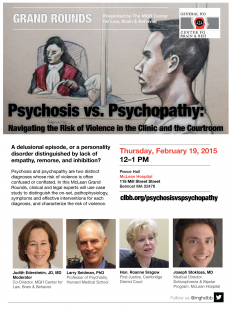By Kyle S. Minor, Michelle Friedman-Yakoobian, Y. Jude Leung, Eric C. Meyer, Suzanna V. Zimmet, Brina Caplan, Thomas Monteleone, Caitlin Bryant, Margaret Guyer, Matcheri S. Keshavan, and Larry J. Seidman | Australian and New Zealand Journal of Psychiatry | August 2015
Abstract:
Objective:
Functional impairments are debilitating concomitants of psychotic disorders and are present early in the illness course and, commonly, prior to psychosis onset. The factors affecting social and role functioning in early psychosis (EP) following treatment are unclear. We evaluated whether six months of participation in the PREPR, Boston, EP treatment program, part of a public-academic community mental health center, was related to improvements in social and role functioning and whether premorbid adjustment in adolescence, baseline neurocognition, and depression symptoms predicted functional improvement.
Method:
The Global Functioning Social and Role scales, MATRICS neurocognitive battery, and Calgary Depression Scale were assessed at baseline and six months during naturalistic treatment, while premorbid adjustment was measured at baseline. All participants were psychotic disorder patients in PREPR (n = 46 with social functioning and 47 with role functioning measures at both time points).
Results:
Large improvements were observed in role functioning (d = 0.84) and medium to large improvements were observed in social functioning (d = 0.70). Models consisting of adolescent premorbid adjustment and change in depression symptoms predicted social and role functioning change, whereas neuropsychological functioning did not.
Conclusions:
Substantial improvements in social and role functioning were observed among this sample participating in a recovery-based EP program. The impact of clinical factors on social and role functioning was highlighted. Further studies of premorbid adjustment in adolescence and the treatment of depression in EP programs in controlled treatment trials are needed to confirm these findings.




